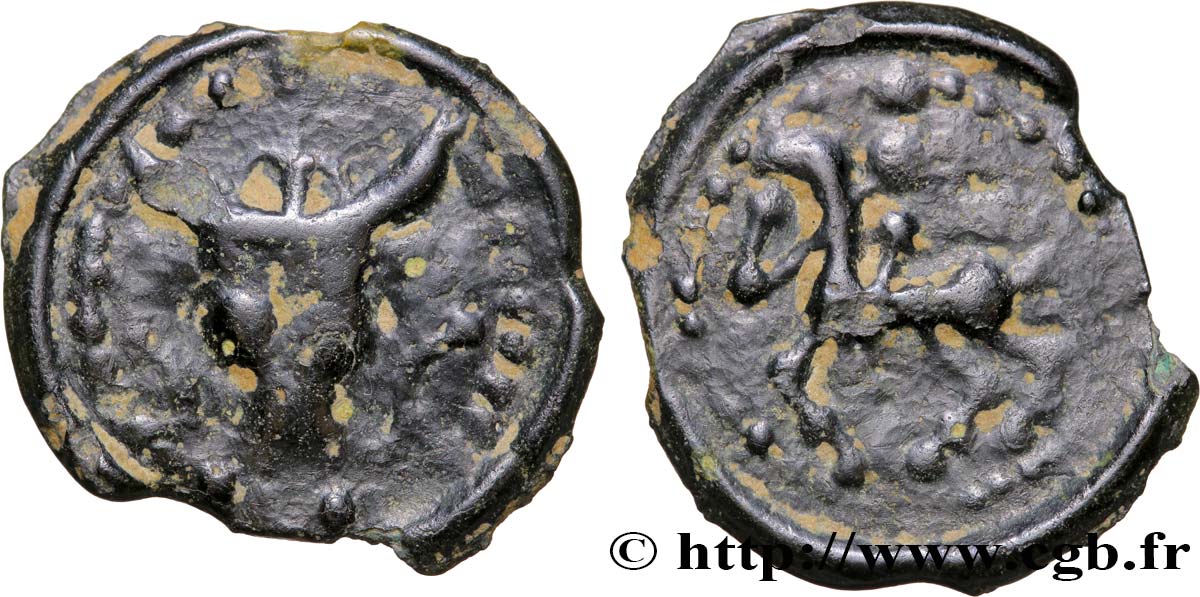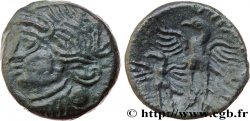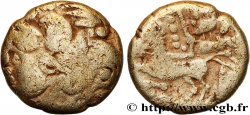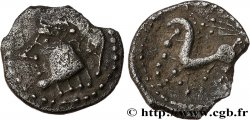Live auction - bga_379162 - GALLIA - BITURIGES CUBI (Regione di Bourges) Potin au bucrane et au cheval
Devi Sign-in ed essere un offerente approvato fare un'offerta, Login per fare offerte. Conti sono soggetti ad approvazione e di approvazione sono raggiunti entro 48 ore. Non aspettare fino al giorno di una vendita si chiude per registrarti.Confermando la tua offerta su questo oggetto ti impegni ad un contratto legalmente vincolante per l'acquisto di questo prodotto e fare clic su «offerta» costituisce accettazione dei termini di utilizzo de live auctions cgb.fr.
Offerta deve essere collocato in euro gli importi interi vendita only.The si chiuderà al momento sulla descrizione dell'oggetto, eventuali offerte pervenute al sito dopo l'orario di chiusura non verranno eseguite. Volte transmition possono variare e le offerte potrebbero essere respinto se si attende per gli ultimi secondi. Per ulteriori informazioni ckeck le FAQ Live auction.
Le offerte vincenti saranno sottomesse ai 18% per spese di compartecipazione alla vendita.
Le offerte vincenti saranno sottomesse ai 18% per spese di compartecipazione alla vendita.
| Valutazione : | 600 € |
| Prezzo : | 260 € |
| Offerta maxima : | 280 € |
| Data di fine vendita : | 01 marzo 2016 15:26:47 |
| partecipanti : | 2 partecipanti |
Tipo : Potin au bucrane et au cheval
Data: Ier siècle avant J.-C.
Metallo : potin
Diametro : 19,5 mm
Asse di coniazione : 3 h.
Peso : 2,75 g.
Grado di rarità : R3
Commenti sullo stato di conservazione:
Potin exceptionnel, avec de beaux reliefs pour ce type. Patine sombre et brillante, sur un flan un tout petit peu irrégulier
Diritto
Titolatura diritto : ANÉPIGRAPHE.
Descrittivo diritto : Bucrane accosté de deux esses, une croisette entre les cornes ; un grènetis en descendant d’une corne à l’autre et bourrelet périphérique.
Rovescio
Titolatura rovescio : ANÉPIGRAPHE.
Descrittivo rovescio : Cavalier (?) à gauche ; grènetis perlé et bourrelet périphérique.
Commento
Ce potin est très rare ; seulement connu par un exemplaire au musée de Zurich et de très rares en collections privées, c’est la seconde fois que nous le proposons à la vente après le bga_364110 de CELTIC 9 et nous n’en avons jamais vu passer d’autre en catalogues !
Le prototype du droit est clairement le potin des Rèmes au bucrane, lui-même inspiré du rare sesterce de Caius Antius Restio frappé vers 45 avant J.-C. Le revers au cheval n’a rien à voir avec l’ours du potin des Rèmes.
Le cavalier supposé n’est pas visible sur le n° 275 de Zurich (lui-même repris en dessin par A. Gaumann pour son n° 176). Le n° 24.5 de H. Patat correspond à notre monnaie, mais le cavalier pourrait n’être qu’une interprétation à partir de globules qui auraient fusé entre eux....
This potin is very rare; only known from a example in the Zurich museum and very rare ones in private collections, this is the second time that we are offering it for sale after bga_364110 from CELTIC 9 and we have never seen another one appear in catalogs ! The prototype of the law is clearly the Remi potin on the bucrane, itself inspired by the rare sestertius of Caius Antius Restio struck around 45 BC. The reverse on the horse has nothing to do with the bear of the potin of the Remes. The supposed rider is not visible on number 275 of Zurich (itself used in drawing by A. Gaumann for his number 176). No. 24.5 by H. Patat corresponds to our coin, but the rider could only be an interpretation based on globules which would have merged between them...
Le prototype du droit est clairement le potin des Rèmes au bucrane, lui-même inspiré du rare sesterce de Caius Antius Restio frappé vers 45 avant J.-C. Le revers au cheval n’a rien à voir avec l’ours du potin des Rèmes.
Le cavalier supposé n’est pas visible sur le n° 275 de Zurich (lui-même repris en dessin par A. Gaumann pour son n° 176). Le n° 24.5 de H. Patat correspond à notre monnaie, mais le cavalier pourrait n’être qu’une interprétation à partir de globules qui auraient fusé entre eux....
This potin is very rare; only known from a example in the Zurich museum and very rare ones in private collections, this is the second time that we are offering it for sale after bga_364110 from CELTIC 9 and we have never seen another one appear in catalogs ! The prototype of the law is clearly the Remi potin on the bucrane, itself inspired by the rare sestertius of Caius Antius Restio struck around 45 BC. The reverse on the horse has nothing to do with the bear of the potin of the Remes. The supposed rider is not visible on number 275 of Zurich (itself used in drawing by A. Gaumann for his number 176). No. 24.5 by H. Patat corresponds to our coin, but the rider could only be an interpretation based on globules which would have merged between them...








 Segnalare un errore
Segnalare un errore Stampate la pagina
Stampate la pagina Condividi mia selezione
Condividi mia selezione Fai una domanda
Fai una domanda Consegnare / vendere
Consegnare / vendere
 Descrittivo
Descrittivo










